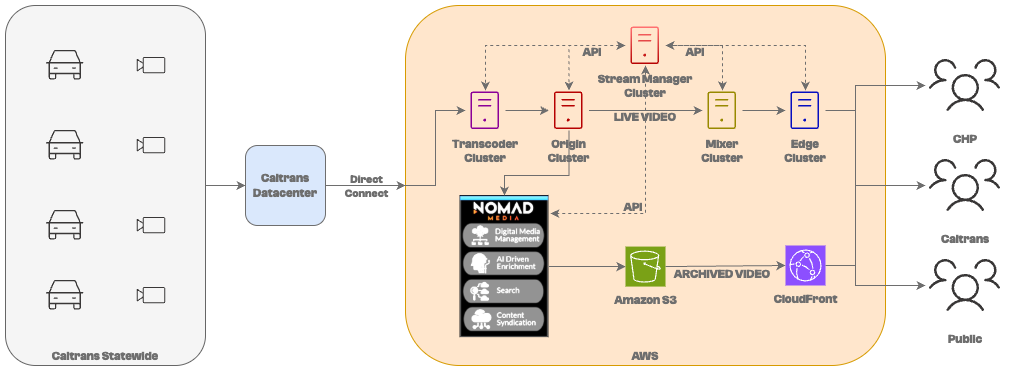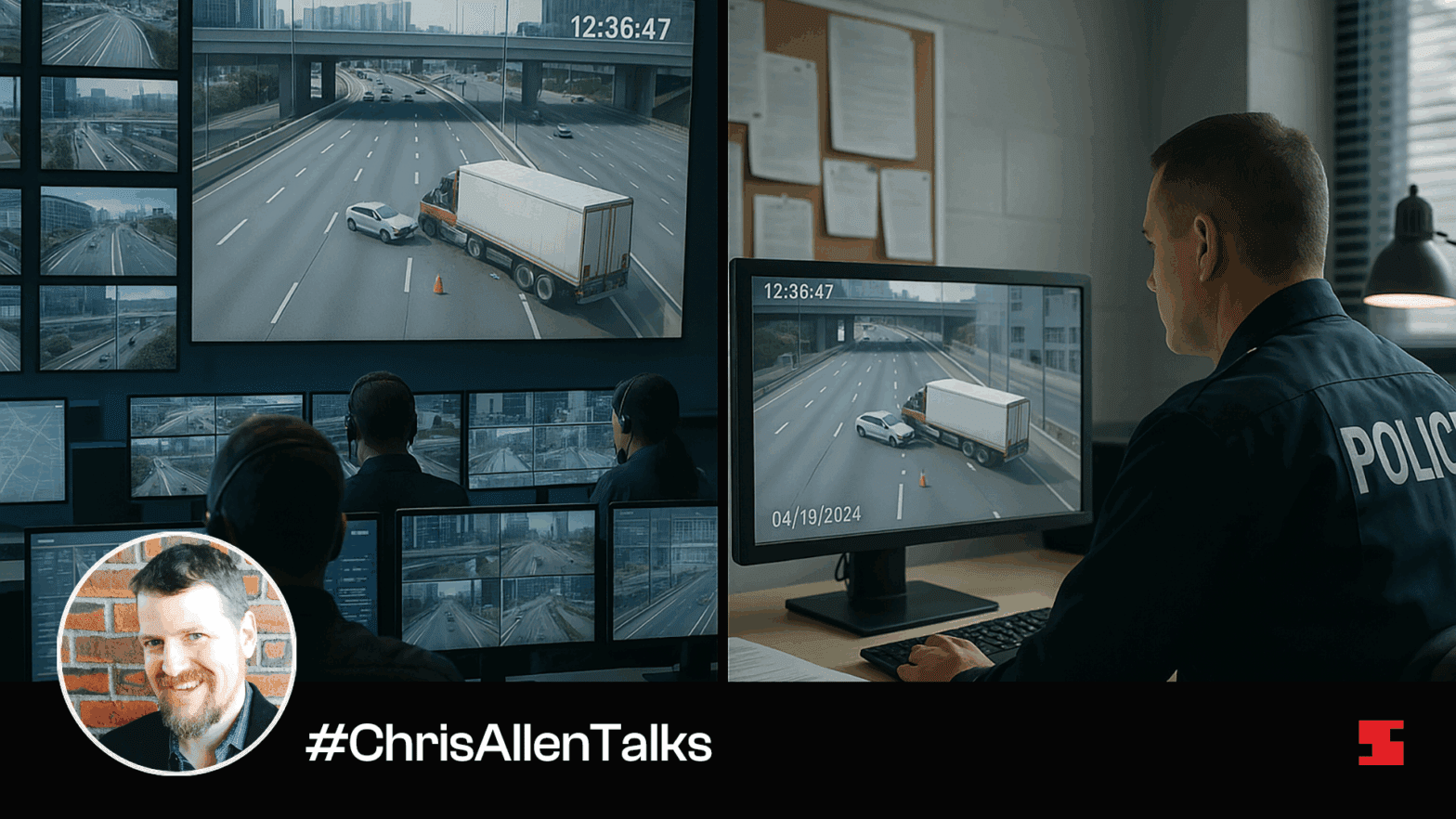Hi everyone, Chris Allen here, co-founder and CEO of Red5. I’ve been building live streaming solutions for nearly 20 years and want to start sharing more of what I’ve learned. Oh, and my marketing team thinks this is a good idea. 🙂 The live streaming space is constantly shifting. New protocols, demands, and use cases… Continue reading What Is Air-Gapped Streaming, And Why Are More Teams Asking For It?
Hi everyone,
Chris Allen here, co-founder and CEO of Red5. I’ve been building live streaming solutions for nearly 20 years and want to start sharing more of what I’ve learned. Oh, and my marketing team thinks this is a good idea. 🙂
The live streaming space is constantly shifting. New protocols, demands, and use cases keep shaping how we think about latency, scale, and reliability. I recently started the #ChrisAllenTalks segment on my LinkedIn profile, where I talk about the trends I’m seeing and the challenges our team is tackling. Many of you are working on the same kinds of problems, just from different angles.
I’d truly value your perspective, even if it doesn’t align with mine. Truth emerges from debate. Connect with me on LinkedIn and let’s put some ideas on the table.
Today I want to cover a topic that’s come up a lot lately – air-gapped streaming.
What Is Air-Gapped Streaming?

Real-time monitoring in a secure, high-security command center
If you’re unfamiliar with “air-gapped” in the context of streaming, you’re not alone. Even some seasoned folks I’ve spoken with recently hadn’t heard the term before.
In simple terms, an air-gapped streaming solution is one where an environment, often used by government agencies or critical infrastructure teams, is completely isolated from the public internet, yet still needs to stream video, audio, or data in real time. Think traffic monitoring or law enforcement. For these teams, it’s not just about privacy or caution. Strict regulations around security, access control, and data sovereignty make this kind of setup non-negotiable.
The term “air gap” originally described a literal physical separation – the “gap of air” between two systems. In computing, it evokes the idea that the only thing between secure and insecure systems is air, with no data bridge between them. Over time, the term was formalized in cybersecurity to describe environments that intentionally lack any wired or wireless connectivity to external systems.
Who Uses Air-Gapped Video Streaming

Soldier monitors military drone streaming in a remote desert
Systems that require this type of streaming include:
- Military or government infrastructure where security is non-negotiable
- Financial networks, such as those powering stock exchanges
- Industrial control systems in oil and gas fields, including SCADA setups
- Lottery systems, where preventing manipulation is critical
- Life-critical systems like: Nuclear power plant controls, Avionics and air traffic control systems, Computerized medical equipment.
Why Are More Teams Asking For It?

Military command center analyzing real-time surveillance and tactical data in a secure environment
We’ve been seeing more questions around how to securely bridge a disconnected environment to a secure cloud while maintaining sub-250 millisecond latency. These agencies want to
- view camera feeds in real time,
- access content on demand through intuitive interfaces,
- and run AI-driven analysis to surface insights quickly.
It’s complex, but with the right architecture and software, it’s very doable.
How Red5 Solves the Air-Gapped Streaming Challenge
We’ve built a plugin for Red5Pro that allows the system to run completely off-line bypassing our standard licensing checks. We call the plugin Castaway. Castaway and the ability to deploy on on-prem hardware is fairly unique in the WebRTC-based real-time streaming space, and to my knowledge we are one of the only vendors allowing this without having to use antiquated USB dongles plugged into the servers.
Our Castaway plugin allows the Red5 server software (which is configured per customer) to run in this environment bypassing our standard licensing check. Then the system just runs normally connecting to IP addresses locally on the air-gapped network just like it would on an internet-connected system. We’ve actually set up very simple networks like this at trade shows like NAB where we want to run the system and in that case, not rely on the internet.
Real-World Applications
Caltrans
Watch the Caltrans traffic monitoring demo on Youtube
One of the new and exciting projects we are working on with an offline system using Castaway is in the traffic monitoring space. Red5 and Nomad Media have partnered with AWS to make Caltrans traffic camera footage running on an air-gapped network available to law enforcement in real time. Using Red5 for WebRTC streaming, the California Department of Transportation also achieved latency well below 500ms, reducing overall latency by 14 to 29 seconds. This is one of a number of really exciting projects like this that are happening.

Deployment diagram of Phase 2 of the Caltrans District 7 solution, built by Red5 and Nomad Media
One of the most impactful outcomes has been cross-agency content sharing. For example, when an accident occurs, traffic monitoring teams can pass footage directly to law enforcement as video-on-demand content to support investigations. That level of inter-agency collaboration, delivered in real time, makes a big difference.
What’s worth noting is that we’re not forcing these teams to abandon their existing workflows. They are still able to continue to use their isolated trusted on-premises systems. We’re just expanding what they can do with those systems by adding secure, real-time capabilities without sacrificing compliance or control.
Conclusion
In this post, I break down what air-gapped streaming means and why more organizations are asking for it. These are fully offline environments, often used by government or critical infrastructure teams, that still need real-time video and data without touching the public internet. To solve this, we created a plugin called Castaway that lets Red5 Pro run entirely offline without needing internet-based license checks. One example is our work with Caltrans and Nomad Media, where we made real-time traffic footage available to law enforcement without disrupting their secure, on-prem systems.
Try Red5 For Free
🔥 Looking for a fully managed, globally distributed streaming PaaS solution? Sign up for Red5 Cloud today! No credit card required. Free 50 GB of streaming each month.
Looking for a server software designed for ultra-low latency streaming at scale? Start Red5 Pro 30-day trial today!
Not sure what solution would solve your streaming challenges best? Reach out to our team to discuss your case.
Chris Allen is the co-founder and CEO of Red5, with over 20 years of experience in video streaming software and real-time systems. A pioneer in the space, he co-led the team that reverse-engineered the RTMP protocol, launching the first open-source alternative to Adobe’s Flash Communication Server. Chris holds over a dozen patents and continues to innovate at the intersection of live video, interactivity, and edge computing. At Red5, he leads the development of TrueTime Solutions, enabling low-latency, synchronized video experiences for clients including NVIDIA, Verizon, and global tech platforms. His current work focuses on integrating AI and real-time streaming to power the next generation of intelligent video applications.

